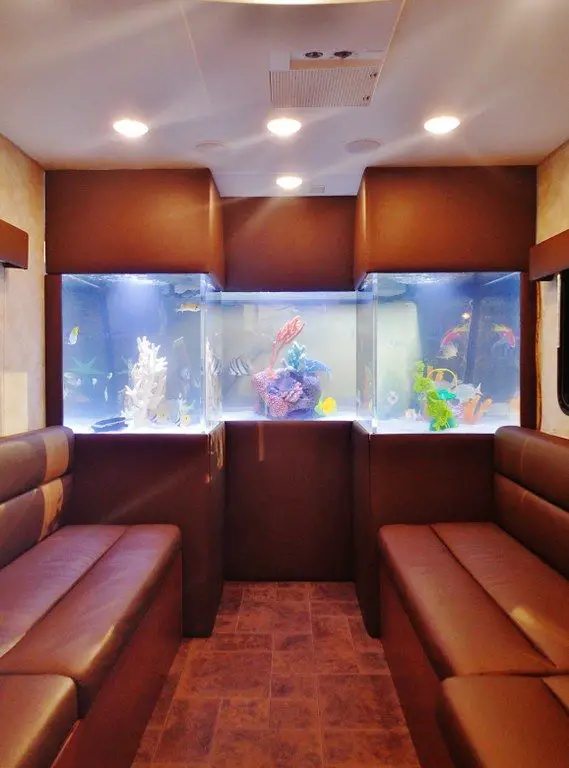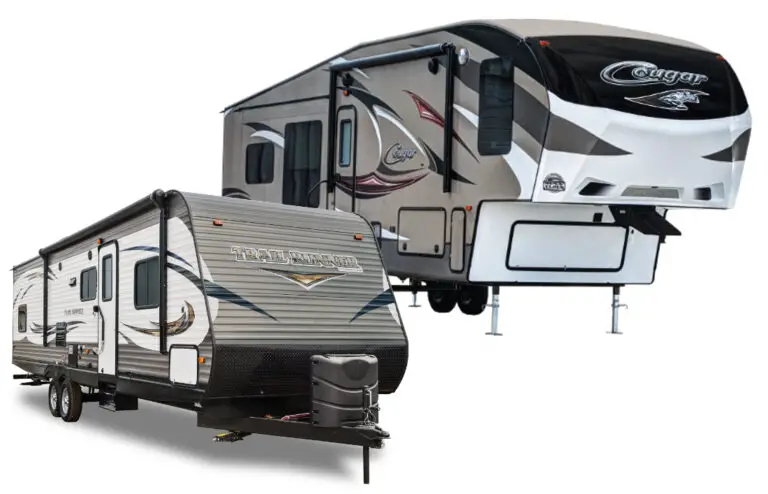Chassis Battery Vs Coach Battery
Chassis Battery is used to power the vehicle’s engine and associated components, while Coach Battery is responsible for powering the living amenities within a recreational vehicle (RV) or motorhome. The Chassis Battery and Coach Battery are two distinct batteries with different functions in an RV or motorhome.
The Chassis Battery, also known as the starting battery, is responsible for starting the vehicle’s engine and powering its associated components, such as the headlights, dashboard, and ignition system. On the other hand, the Coach Battery, also called the house battery, is used to power the living amenities within the RV, including lights, appliances, and the water pump.
While the Chassis Battery recharges while the engine is running, the Coach Battery relies on an external power source, such as a generator or shore power, to recharge. Understanding the differences between these two batteries is crucial for maintaining the proper functionality of an RV.

Credit: m.youtube.com
Understanding The Basics
In order to understand the difference between a chassis battery and a coach battery, it is important to first grasp their respective purposes and functions. The chassis battery, also known as the engine battery, is responsible for powering the vehicle’s engine and its related systems such as the starter motor and ignition system. It provides the electrical energy required to start the engine and keep it running while the vehicle is in motion.
On the other hand, the coach battery, often referred to as the house battery or auxiliary battery, serves a different purpose. It powers the various systems and appliances inside the living area of a motorhome or RV, such as the interior lights, water pump, refrigerator, and entertainment systems. The coach battery allows occupants to use these amenities even when the vehicle’s engine is not running or the vehicle is parked without being plugged into external power sources.
Both the chassis battery and coach battery are essential components in any motorhome or RV, each serving its own specific functions. Understanding these differences can help RV owners properly maintain and troubleshoot their electrical systems for optimal performance on the road.
Key Differences
The main differences between a chassis battery and a coach battery lie in their power capacity and output, wiring and connections, and charging sources and methods.
| Chassis Battery | Coach Battery |
| Typically has a lower capacity | Usually has a higher capacity |
| Powers the vehicle’s engine and systems | Provides power to the coach’s appliances and amenities |
- Chassis battery is connected to the vehicle’s electrical system
- Coach battery is connected to the coach’s electrical system
- Each battery has its own set of wires and connections
- Chassis battery charges while the engine is running
- Coach battery can be charged through various sources such as shore power, solar panels, or a generator
- Charging methods may differ based on the type of battery and the RV’s setup
Understanding the differences between chassis and coach batteries is important for RV owners to properly manage their power usage and ensure the smooth operation of both the vehicle and onboard amenities.
Impact On Different Systems
The impact on different systems greatly differs between the chassis battery and coach battery. Each serves a specific purpose, with the chassis battery powering essential vehicle functions and the coach battery providing electricity for onboard amenities and appliances. Understanding the distinction between these two batteries is crucial for efficient and reliable RV operation.
The chassis battery and coach battery play crucial roles in the overall functioning of an RV. Let’s explore how these batteries impact various systems:
Starting and Ignition:
The chassis battery primarily powers the starting and ignition systems of the RV. It supplies the necessary energy to turn on the engine, activate the fuel pumps, and initiate the ignition process. Without a charged chassis battery, the RV cannot be started.
Lighting and Electrical Systems:
The coach battery is responsible for powering the lighting and electrical systems of the RV. From interior lights to exterior illumination, the coach battery ensures proper functionality of these important features. Additionally, it provides electrical power to appliances and charging outlets in the living area of the vehicle.
Appliances and Amenities:
Various appliances and amenities fitted within the RV depend on the coach battery for operation. This includes the refrigerator, air conditioning, heating systems, entertainment devices, water pumps, and more. A fully-functioning coach battery is essential to enjoy the comforts and conveniences of an RV.
Maintenance And Troubleshooting
When it comes to Chassis Battery Vs Coach Battery, regular maintenance and troubleshooting are crucial to ensure optimal performance. Checking battery health and voltage is an essential part of this process. Regularly inspecting the battery for any signs of damage or corrosion is important. Additionally, using a voltmeter to measure the voltage can provide valuable information about the battery’s overall health.
If the battery needs to be replaced or upgraded, it is important to choose the right battery for your specific needs. Considering the battery’s capacity, size, and compatibility with your RV system is essential.
Common issues that may arise with the batteries include low voltage, slow charging, or battery draining quickly. Troubleshooting these issues may involve checking the wiring, cleaning the battery terminals, or consulting a professional for advanced diagnostics. By following these maintenance and troubleshooting tips, you can ensure that your Chassis and Coach Batteries stay in optimal condition, prolonging their lifespan and reducing the risk of any unwanted issues during your travels.
Frequently Asked Questions For Chassis Battery Vs Coach Battery
What Is The Difference Between A Chassis Battery And A Coach Battery?
A chassis battery powers the engine and essential components of a vehicle, whereas a coach battery powers the living spaces and appliances in an RV or motorhome.
Can I Use The Coach Batteries To Jump-start The Chassis Battery?
No, it is not recommended to use the coach batteries to jump-start the chassis battery. The chassis battery is specifically designed for starting the engine, and using the coach batteries for this purpose can cause damage to the electrical system.
How Long Do Chassis Batteries Typically Last?
On average, chassis batteries can last anywhere from 3 to 5 years. However, their lifespan can vary depending on factors such as usage, climate, maintenance, and the quality of the battery.
Are Chassis Batteries And Coach Batteries Interchangeable?
Chassis batteries and coach batteries are not interchangeable. They have different purposes and power different systems in an RV or motorhome. Using the wrong battery in a specific application can lead to electrical issues and damage to the vehicle’s components.
Conclusion
Understanding the differences between the chassis battery and the coach battery is essential for any RV owner. The chassis battery powers the engine and essential vehicle functions, while the coach battery powers the living quarters. By knowing how these two batteries function and maintaining them properly, RV enthusiasts can ensure a smooth and hassle-free camping experience.
So, take the time to familiarize yourself with your RV’s battery system and enjoy your adventures on the road!






